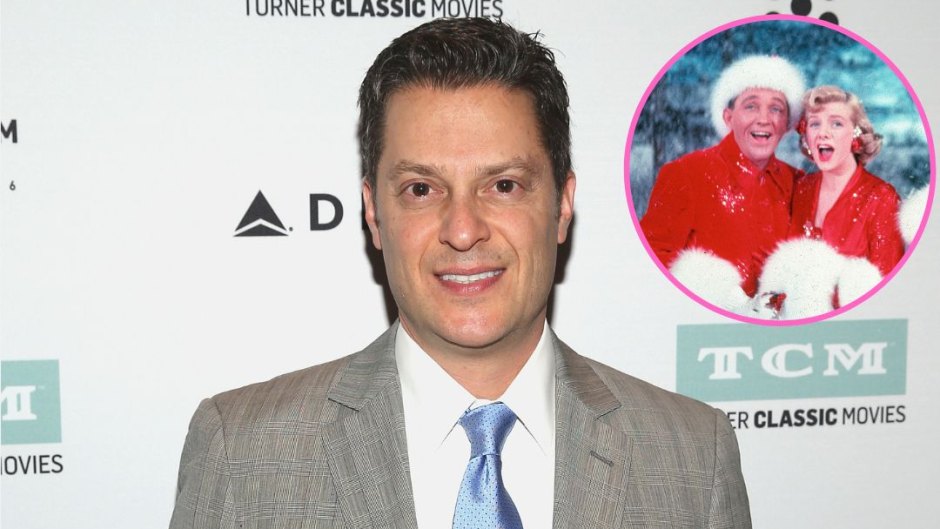
Getty Images (2)
Author Jeremy Arnold Discusses the Holiday Season’s Best Films: ‘Stood the Test of Time’
The holiday season is one of the most beloved times of the year, and it wouldn’t be so memorable without treasured films like A Christmas Story, White Christmas and more. No one knows this better than Jeremy Arnold, author of Christmas in the Movies (Revised & Expanded Edition), and he spoke to Closer’s Katie Bruno exclusively about the makings of the films that transform living rooms into magical movie theaters throughout December.
Let’s start with The Shop Around the Corner. What was so interesting about the making of that and why is it still a classic today?
The Shop Around the Corner is interesting because it was a really personal project for the director, Ernst Lubitsch. It’s something that really has stood the test of time with a really wide number of audiences. That is, I think because it uses the Christmas season to sort of parallel the relationship between Jimmy Stewart and Margaret Sullavan, who start out hating each other. They work in a store together and they get on each other’s nerves constantly, but what they don’t know is they’re actually secret pen pals with each other.
As the film goes on and Stewart starts to realize the truth of the situation, their relationship changes and they start to see each other in a deeper way than they had before. As this happened, Christmas becomes more prevalent, literally in the frame: we see Christmas decorations, trees, hear music, see snow, all these things that we associate with the holiday season, they start overwhelming the film visually and on the soundtrack. Then of course the story culminates on Christmas and they finally find their love for each other and it actually is Christmas. That is a very common progression in Christmas movies, for the story to be set in the days leading up to Christmas.
How big of a movie was this at its release? Was it supposed to be a big Christmas movie or did that develop over the years?
Well there really wasn’t such a thing as Christmas movies back in the ’30s, ’40s and ’50s, it was not a recognized genre. No one ever said back then “I’m making a Christmas movie.” The whole idea of Christmas movies released at Christmas time and filled with Christmas imagery, that was a pretty modern phenomenon. Everyone defines Christmas movies differently, because it isn’t really a genre, and that is why people love to debate over if certain films are or aren’t Christmas movies. What that debate always boils down to is the fact that each person is defining Christmas movies in a different way; so each person is right in the debate, they’re just arguing over different things.
In terms of classics that are now recognized as Christmas movies that we like to return to every year, including The Shop Around the Corner, I found in doing this book that these films have certain things in common that speak to future audiences. The rituals of Christmas and the different ways that we feel about Christmas every year: the good and the bad, the high and the low, that has not changed in the last hundred years. It happens every year where people experience these things, so movies that capture those types of meanings of the holiday and the different emotional relationships we have with it, they really stand the test of time because we’re fascinated to see how these other characters in a different time frame, wearing different types of costumes or whatever, are going through the same things that we are today in 2023.
The next one is The Man Who Came to Dinner, which stars Bette Davis.
I think that one stands the test of time because it’s about something we can all relate to, which is a house guest who never leaves. I think we have all had a house guest who has overstayed their welcome or have been a house guest who has overstayed their welcome, probably both. That is a very inherently funny concept and very relatable. This was a huge hit and was adapted from a huge Broadway hit, it ran for several years on Broadway. It was written by George S. Kaufman and Moss Hart. Before the Broadway run was even over Warner Brothers had bought the rights to start and develop the movie version. The casting was an issue; the play had starred Monty Woolley, who was a big Broadway star but hadn’t done any movies and was not known as a movie star. The studio went through all these other big name actors that they tested, like Charles Laughton, Fredric March and John Barrymore. Even Orson Welles wanted to make this his second movie after Citizen Kane and RKO wouldn’t release him to do that.
So after all this, the studio decided to go with Monty Woolley after all, and this ended up making him a big movie star and bringing him to the attention of moviegoers. He’s perfect in this film, and it is really hard to imagine anyone else doing it. He plays a very arrogant, self-absorbed writer who ends up having to stay in the home of a midwestern couple and has to recuperate, and it happens to be over the holidays. He starts making outrageous demands, taking over their house and lives in a very zany way. Bette Davis is his assistant who is trying to break away from working for him, and he realizes this and tries to manipulate her to keep her. It’s really funny with a verbal zinger every few seconds, it’s that kind of comedy and the writer, George S. Kaufman has written some Marx Brothers movies and you can see that dynamic carried over into this.
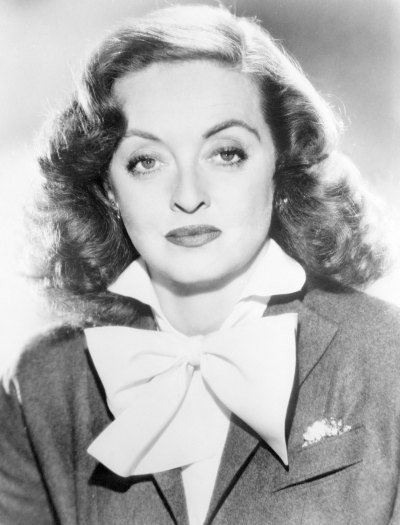
The next one I wanted to ask about was Holiday Inn which stars Bing Crosby. He is now kind of known as “Mr. Christmas” but was it like that back then? Like was it even acknowledged as a Christmas movie?
Again, it wouldn’t have been called a Christmas movie, it would have been called a musical. It just happens to have Christmas in it, in a pretty major way. I mean of course the plot has it set over many holidays over the year, that’s the plot device of the film. They open this night club in Connecticut that is only open on holidays; so there’s a Christmas scene, a Valentine’s Day scene, Fourth of July and so on. In terms of Bing Crosby being linked to Christmas, this movie did it, but really the song “White Christmas” did it. He debuted the song about a year or a few months before the film came out. The song was first heard on the radio on Christmas Day in 1941, performed by Bing Crosby. So audiences already knew the song and it was already a big hit, the film just made it a big hit all over again. By some measures it’s still the most popular song ever made in this country. When you’re known for performing the biggest song of all time, that’s going to link you to the song, which happens to be about Christmas pretty strongly. That’s where the linkage comes from.
Another big one is Meet Me in St. Louis with Judy Garland.
Meet Me in St. Louis is a really interesting case study in what makes a Christmas movie, because Christmas is only in the last quarter or so of the film – maybe the less. The rest of the movie is set throughout the rest of the year, but why is it a Christmas movie? Well, any movie that has Judy Garland singing “Have Yourself a Merry Little Christmas” in the way that she does here, will make it a Christmas movie. Like “White Christmas,” it is one of the most popular and beautiful songs connected to the season. It’s one of the songs that Judy Garland is most known for. The way it’s used in the film is really poignant because she is singing it to little Margaret O’Brien, who is distraught that the family has to move from their home in St. Louis to New York, she doesn’t want to.
So Judy Garland sings this song as a way to console her, and like the song “White Christmas,” it’s filled with a strain of melancholy and loss, which makes it really poignant. Those qualities are what some of us experience at Christmas time: we all have lost loved ones who we have spent past Christmases with, or our circumstances changed in the past year. There are always natural highs and lows connected to the season, and this song captures that beautifully. And then furthermore, the family resolves their big plot issue of whether they’ll move to St. Louis late at night on Christmas Eve, which turns into Christmas Day. It’s just tied to the holiday. It’s like Christmas time is a catalyst to make these people transform; make the father, who is the one that wants to move to New York, make him transform. It’s almost like a Scrooge transformation, where he comes to realize the importance of family and what is important in life, so he decides they will stay in St. Louis. “We’ll stay here until we rot” he says.
It’s a Wonderful Life is the quintessential Christmas movie. When it came out, was it deemed a Christmas movie or still the same thing of no one thought of it like that?
No same thing; it did open around Christmas in major markets, but it didn’t open widely until January 1947. It wasn’t even supposed to be released at Christmas time, it was a last-minute substitution for another movie, I think it was Sinbad the Sailor. In any event, it was not a huge bomb, as is often reported today, but it wasn’t a huge hit. It performed modestly, and it sort of came close to breaking even. It was rediscovered decades later when it was played on television and fell into the public domain for a while, and ever since it has been seen as the ultimate, the greatest, the most beloved Christmas movie. I think that’s because, here is a movie that really captures the highs and lows of the holiday season.
It’s not set all at Christmas time, though in a way I guess it is the way George Bailey on Christmas Eve imagines everything that happens in the story in the flashback, but Christmas really comes in towards the end and helps him really realize what is important in life, that his family and friends are everything and the way he has touched so many people in his life that he didn’t even know about, that has made his life now really worthwhile. Along the way he goes through a lot of trauma, and so does the audience; the movie starts with him contemplating suicide.
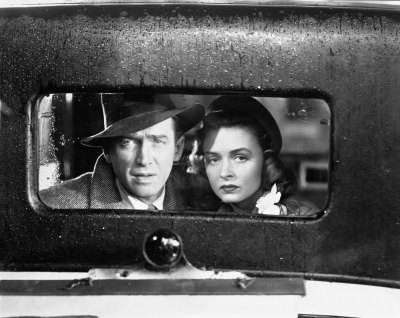
Suicide is actually a pretty common story element in Christmas movies, it’s in The Shop Around the Corner, it’s in Elf, it’s in The Apartment; and I think the reason that it comes up as much as it does, is because it’s sort of the ultimate extreme of despair. Despair and loneliness are common experiences for us at Christmas time at some point, we don’t all contemplate suicide, but in terms of dramatic device, it’s what any screenwriter would think of when they were thinking about how to depict someone spiraling down into despair. So it’s a powerful device because the contrast between that and the joy, the ultimate highs of the season is really profound. The ending of It’s a Wonderful Life I think is the most joyous in all of cinema, but it is so partly because of the depths of despair we were subjected to early in the film.
Next I have Miracle on 34th Street.
One hundred percent not was this considered a Christmas movie at the time of its release. It opened in the early summer, and the advertising, the posters and trailer, did not mention Christmas. They didn’t have any indication that it was about Christmas, well I’m not sure about the trailer, but the posters do not show Santa Claus, or anything related to Christmas. The studio, Fox, didn’t know they had this great movie on their hands. They didn’t know how to market it and didn’t know it would appeal to audiences, so they opened it in the summer because that’s the big time of year for movie going and they thought that was the best way they’d make back their money. Well, it became a sleeper hit; it came out of nowhere and just mushroomed and became the biggest hit of the summer. It played all through the summer, into the fall and audiences didn’t care that it wasn’t Christmas time when they were watching it, it was just a good movie.
Now of course in our era, we love watching movies at Christmas time that have something to do with Christmas, but that wasn’t necessarily the case back then. This one captures the right of passage, believing of Santa Claus, that so many children go through in their lives and is something we’re all charmed by and love. But this one captures it perfectly, and it also is really notable in that it was released shortly after the end of World War II, and it’s about a single mother, played by Maureen O’Hara, whose daughter is Natalie Wood and there were a lot of single mothers right after World War II because a lot of Americans died in World War II. So, there’s actually a whole lot of movies of that time that touch on this, and a lot of them are Christmas movies, because Christmas started to be used by Hollywood filmmakers to represent the family unit at a time when families had been so ruptured, fractured and destroyed, or were trying to rebuild themselves. So, this was a really important movie in that sense.
The next one I have is Holiday Affair. That one starred Robert Mitchum and Janet Leigh, both very big stars.
Holiday Affair is very similar to Miracle on 34th Street; it’s also about a single mother working in New York, who, in the case, has a little boy and her husband died in World War II, that’s a big part of the plot. And in the film, she has to choose between two guys: Robert Mitchum and Wendell Corey, and no big surprise who she chooses. The way I think about it, Miracle on 34th Street is for the kid in all of us, the kid in all of us who believes in Santa Claus, where Holiday Affair is really for grownups. It’s a very mature film about marriage, loss, loneliness and going through the world with or without someone.
Miracle on 34th Street is partially from the perspective of the child, but this movie is really through the perspective of the adults who are trying to sort through all these things. It’s set during the Christmas season, and that plays into the romance that develops between Janet Leigh and these characters, and has a lot of charming comedy and humor as well that plays into the season. But, like I said, it also delves into these serious and tragic ideas that can go with the natural melancholy that goes with the season.
Let’s talk about White Christmas.
White Christmas was very acclaimed, even back then. It was one of the biggest hits of all of the year in Hollywood, it might have even been No. 1. I know it was the biggest hit for Paramount in 1954. This was sort of a retread of Holiday Inn, not a remake, but a similar type of story. Bing Crosby is in it and Fred Astaire was to have been in it, but he didn’t really care for the script, so after they offered that part to Donald O’Connor, then at the very last minute he fell ill and they had to replace him with Danny Kaye. This was incredibly popular, and I think it’s because it is so much about nostalgia and looking back at the ideal meaning of Christmas. It’s a story of World War II veterans; Crosby and Kaye are two old World War II veterans who are trying to help their commander, played by Dean Jagger, by raising money.
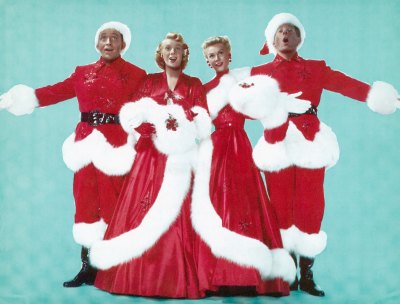
There were millions of World War II veterans in the audience in 1954, and this movie really spoke to them. But it also spoke to all the people who were left on the home front during World War II; they also experienced the loss of family togetherness at Christmas time, and here was a movie specifically about that. It just brought all of those people, moviegoers, Americans, on drogues. I don’t think it’s quite as strong a film as Holiday Inn, but it’s still poignant, fun and has charming musical numbers. It has Bing Crosby, again, singing “White Christmas” on film for the third time. I think people also wanted a chance to see Bing sing a new version of “White Christmas.”
Jumping a few years ahead: A Christmas Story was in the ’80s. At this point was it deemed a Christmas movie? What had changed by this time?
Believe it or not, even A Christmas Story was not considered a Christmas movie at the time. It opened at Thanksgiving, which I guess is not uncommon for Christmas movies to open, but it was out of theaters by the time Christmas arrived. It did not do well and was not a big hit. I have a quote in the book by Roger Ebert, he said at the time in his review that either no one will go see this film or everyone will go see it. He was right on both accounts because really no one went to see it in theaters, but years later when it became a juggernaut on television like it is now, everyone has seen it. Like It’s a Wonderful Life, it was discovered later on and rescued by oblivion of audiences who fell in love with it. This is set in 1940, and the film is really like an ideal and typical childhood Christmas in 1940, with many, many relatable elements, today as well.
The secret ingredient, I think, is the fact that the movie is narrated in voice over by the adult version of Ralphie, the kid in the film played by Peter Billingsley. The voice over, it makes us see the film through the prism of remembering nostalgically what this childhood Christmas was like. But then, we also see the childhood Christmas that is being described, and it doesn’t always match perfectly with what the voice over is telling us, and the way the voice over is telling us is not really the same, and that creates a lot of comedy and a lot of humor and a lot of charm. I think that’s why this film endured, because all of us can relate to remembering nostalgically what childhood Christmases were like and the rituals and crazy experiences that it brings on kids.
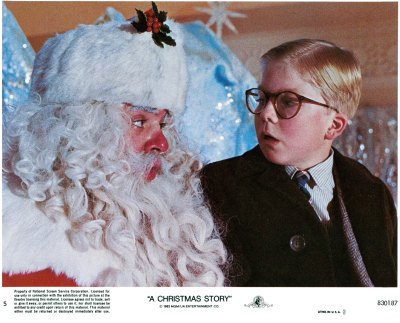
What about National Lampoon’s Christmas Vacation? We see that on TV all the time now too.
This was a third in a series of movies, so it had a built-in audience already. It was sort of a preordained hit in a way, but has become the most remembered film of that franchise because it’s a Christmas movie and comes back every single year, so it’s the one that people have seen most. It’s shoved in our faces the most. It really stands the test of time because it’s a crazy, over the top comedy, but the comedy is coming from very relatable aspects of Christmas that we all experience today. Trying to untangle a maze of Christmas lights that are tangled up in a ball, we’ve all been there to some degree; plugging tons and tons of things into one outlet when you’re trying to plug in Christmas tree lights, we’ve all had a version of that; cooking a turkey for a family dinner and having that go wrong; having a completely dysfunctional family gathering during a holiday with a crazy cousin, a batty grandmother. Who doesn’t have a crazy or batty relative that they don’t see at Christmas time? This takes it to a comic extreme, but that’s where it comes from. It’s not for everyone, it does have some bits that are a bit over the top for some people, and maybe not the most pleasant, but it’s a parody and satire.
Let’s go back a second to The Apartment with Shirley MacLaine.
So The Apartment was directed by Billy Wilder, and it’s a Christmas movie in a very subtle way. As the story goes on, it gets closer and closer to Christmas time. So like in The Shop Around the Corner, you start to see and hear Christmas more. It is a darker story, and it’s a comedy, but it’s a dark comedy with a lot of pain and loneliness in it. The attempted suicide happens on Christmas Eve, Shirley MacLaine tries to commit suicide, and Jack Lemmon rescues her and saves her. That is really the beginning of a new understanding between the two, and that is a common trait of Christmas movies and Christmas time, bringing people together. It resolves dysfunction in families, like in Christmas Vacation, but it also draws people together in a newly honest way. Scrooge, the ultimate example, wakes up on Christmas and it’s not that he’s changed into someone totally different, he just changed to the good person that he always was inside. This is true in the case of The Apartment in the love between Jack Lemmon and Shirley MacLaine, they’re finally able to be open and honest with each other and genuinely fall in love.
Next I had Home Alone – probably one of the most popular Christmas movies of all time.
This was made on a relatively small budget and it became one of the biggest hits ever. It’s still the highest grossing, live-action comedy of all time in America. Adjusted before inflation, I think it still has that record. No one anticipated that it would become that level of a hit, but it does because, well, you really have to hand it to John Hughes who wrote and directed it. As a movie, the way it uses the medium, the tools of cinema to tell its story, build its characters, and build relationships with the characters and the audience, it is absolutely perfect. It’s like classical, Hollywood filmmaking just perfectly realized. It’s like drinking a cold glass of iced tea on a hot summer day, it just goes down really well and nothing could possibly taste as good.
I think at the time it wasn’t particularly taken that seriously, it was just seen as a popular film, not any sort of notable piece of cinema, but that has really changed over the years. It’s always a problem with comedy, people never take comedy seriously. It’s still an issue. I think now it’s just seen as one of the great comedies of the era, and the idea of it is so simple: a little boy is left home alone at Christmas when his family goes off to Europe and forgets to bring him with them. But it really comes down to both Macaulay Culkin and the family, particularly Catherine O’Hara, his mother, realizing the importance of family and their family connection, and how that really is the most important thing in life; their reunion at the end is really poignant because of it. Along the way, Macaulay Culkin is also living out a child’s fantasy of successfully warding off these crooks in genius, comical, booby traps that he sets around the house, and it’s like he’s the smartest kid in the world living in a fantasy where he gets to be alone, eat pizza and watch TV, but is smart enough to defend the house and then realizes Christmas is not the same without family. That is something that, of course, is very relatable.
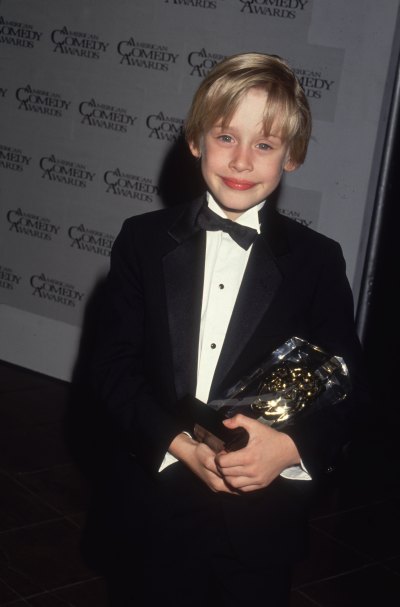
The final one I had on the list is Little Women.
Little Women, first of all the novel by Louise May Alcott has Christmas in it, so it’s built into the story. What makes this version a Christmas movie, more than any of the other versions, is that Christmas is more present in the film on the screen, visually and on the soundtrack. It’s used as a grounding force in the movie, it’s connected to this family and it’s a story about family; a mother and four girls. We as an audience come to feel that the togetherness of this family is the most important thing in the world, and Christmas is the ultimate family holiday, family day or season. So it’s a really appropriate device for setting in stone for the audience how important family really is.
I think Christmas comes up two or three times in the film; family members are coming back or being remembered at Christmas, in the first one the father who is not with them, they see how incomplete it is without him. Christmas is a device that helps bring the family back together and is a reminder of how important family really is. It also was used in the advertising very strongly, and the studio only agreed to make the movie when it was pitched to them as a Christmas movie and something they could open at Christmas time and market with Christmas elements. It stands the test of time, and family togetherness cemented by Christmas is what makes it a Christmas movie, I think.












































